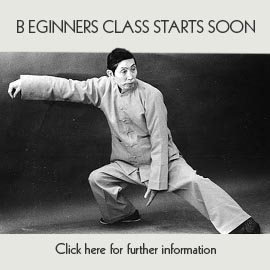I wanted this third lockdown article to be more advisory as several months have passed since we’ve all been together in a class. I thought it might be best to remind us all of basic, and advanced, principles of practice. Whilst the local and international world around us has gone through a lot of change, our practice of the principles should remain even if we are spending most of days in our home.
If we forget a posture or even many of them in a form this is ok, because it is the principles of practice which are the core of our development, and even if we have one form or a hundred forms, principles are what develops whatever we have.
The Lower body: –
1) The feet and legs are like the base of a pyramid with the peak being the Dan Tien (centre of gravity just below the navel and above the hips). The feet and legs constantly flux between the Yin and Yang of Full and Empty, this is what makes the body travel and transport itself. The internal force we generate always comes from pushing off a full foot/leg, and like water through a garden hose transport our effort into the upper body.
2) Remember the waist is like a ball on water, frictionless and set in motion with the slightest of movement, so always keep it loose and pliable. It is the waist that gives us direction when it smoothly turns allowing the force generated below to enter the upper body and exit through the arms and hands.
The Upper body: –
1) The abdomen is full and relaxed allowing the force to transport its unbroken momentum up through the larger and lower vertebrae of the spine upwards.
2) The shoulders hang down through the joints open on the upper back, yet with the sternum and heart area soft and unobstructed. The armpits are open so the arms are distanced from the upper ribs, relaxed but not tightly held.
3) The arms are lengthened but not held tense so they feel lengthened and open at the joints. The internal force that travels up the spine, needs to pass through the ball and sockets of the shoulder joints to sink down the upper arm, and continue their journey filling out the arms as an application’s force exits at the wrist and hands.
The Mind: –
1) Yi/Intention is crisp and clear in initiating all movement from the feet but also in following the internal movement along the pathways above until discharged and the wrist and hands.
2) Shen/Spirit is the quality of mind and consciousness at all times which feels expansive yet still, calm yet ready, rooted internally yet perceiving externally. Shen is the quality of aliveness. The very act of consciously knowing just how alive you are indicates your Shen is healthy.
3) Qi and Jin are the form and function of the internal movement required to move the body internally. Qi is the substantial feeling of internal movement, the vehicle of internal force, and Jin is the mode or shape in how it manifests when moving. Qi can be likened to just internal movement, we could analogise it as a car. With that, Jin would then represent what make of car it is and how fast or slow it is going and in what direction. Jin is also the end product of where and why you wanted to take the car out for a drive in the first place. From a martial art point of view, because of their shape, all postures emit their own Jin in accordance to their shape. Qi is the wave of internal force moving in the body but it’s shape, function and discharge is the Jin.
Remember the body moves as one unit, not like in a rusted and semi-seized up robotic fashion but fluid like a cup of water. If one molecule of water changes its position in the cup, every other molecule must respond appropriately. If one part moves every part should move and if one part stops every part should stop.
Always remember that at all times the body is relaxed. However for Tai Chi we actually go a step further than that and we try to cultivate what is called Sung. This is a little more than just giving up of strength, yet at the same time it can only be achieved if you do anyway. A good way to describe it is everything in the body accords to gravity, and it feels like the muscles and organs almost hang downwards inside the body. Again this is not with force but actually through releasing tension. This allows us to have no obstructions for the upwards force of Qi and Jin when doing applications. Sung usually needs to be revisited often as tension can come back again in seconds after we feel we’ve released it. With practice we can maintain the feeling of Sung all day long, and internally our body will remain unobstructed from tension. This is the way we can do Tai Chi all day everyday and make our normal bodily movements our spontaneous Tai Chi forms. This is what Master Alan Peck referred to when he said make your every day life your Tai Chi; and your Tai Chi your everyday life. There should be no on and off switch between them, you should find they are the same way of living.
I will write more articles whilst we are away from each other, and the class room, and please remember you can ring or text me anytime to chat Tai Chi and non- Tai Chi, but remember, in truth they are the same 🙂

